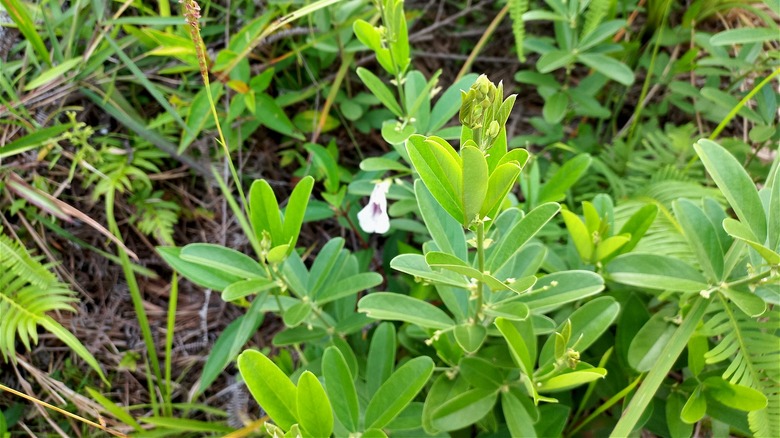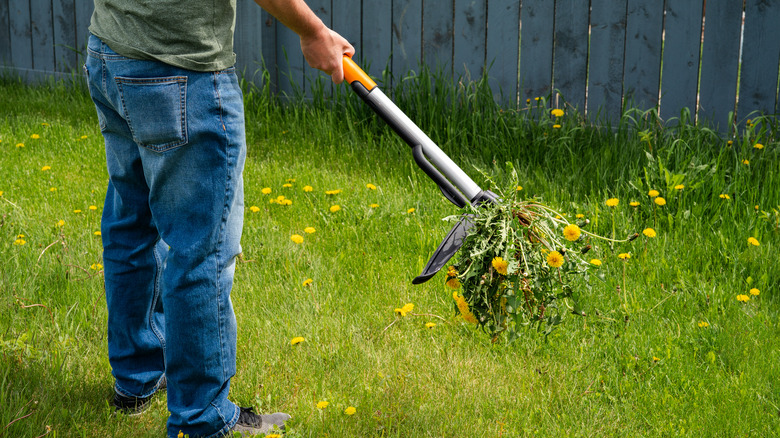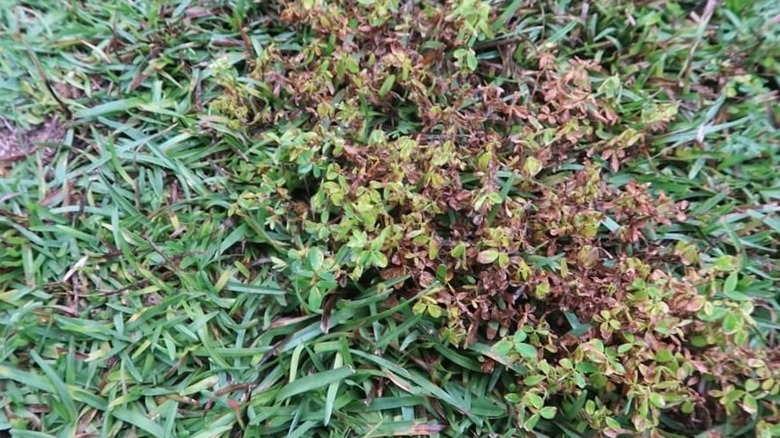How To Control Japanese Clover In Your Lawn
We may receive a commission on purchases made from links.
Japanese clover, also known as lespedeza, is a lawn squatter hailing from East Asia and rumored to have found its way stateside in the mid-1800s. With its flashy trio of round, oblong leaves, complemented by white, pink, or purple blooms, it's a distinctive species that doesn't know when to quit. It's versatile, too, thriving in soils from moist loam to sand and clay, and can be found all over the eastern U.S., where it's considered an invasive species in many states. Despite the few unsuspected Japanese clover benefits (wildlife food and temporary guard against erosion), the question arises: Is Japanese clover good for lawns? Quite the opposite. This low-growing plant is no wallflower. Instead, it forms an intricate mat with stubborn semi-woody tap roots, robbing your turf of essential nourishments.
"How do I stop clover from taking over my lawn?" you may wonder. It's a two-sided coin: hands-on approach (cue aches, sweat, and a hard-earned sense of accomplishment) and chemical warfare (read: less muscle power and potential side-eye from eco-conscious neighbors). Doing things manually will include some good old-fashioned weeding and mowing. On the other hand, chemical control will mean spraying your lawn with a specially formulated pre- or post-emergence herbicide, depending on the intruder's growth phase. Regardless of your chosen approach, one thing stands — a well-fought battle will keep your lawn healthy and thriving.
How do you get rid of Japanese clover without chemicals?
The best way to tackle Japanese clover is by weeding. Whether you take on this task bare-handed or summon a tool like a weeder, strike early enough before these lawn trespassers develop seeds. This helps minimize future invasions. Another critical part of the mission is to seize as much of the root system as possible. Pro tip: Moisten the soil slightly beforehand for slick weed extraction, and knock the dirt off the roots before disposing of the weeds.
A lawn mower will do the job for a vast expanse of clover-infested lawn. This device is not just a tool; it's a precise, strategic weapon. Keep it low, but spare your innocent grass from unworthy scalping. Watch the clover, anticipate its flourishes, and cut it down in time. Adjust the mowing height depending on the turf variety and mower type. For instance, if you're cutting zoysia grass with a reel mower, we're talking about a 1/2- to 2-inch limit. Meanwhile, a centipede grass lawn faces a rotary mower at a strict 1 to 2 inches. Wrap up with some lawn pampering — applications of suitable nitrogen-rich fertilizers and aerification. And finally, a plot twist: reduce the watering. After all, nothing invites greenery mischief like moist, compacted soils.
Chemical control of Japanese clover in lawns
Preemergent herbicides are powerful in the chemical control of lespedeza. Dithiopyr-laced products like Dimension 2EW are a solid shield against the germination of lespedeza in spring. Success with such products often hinges on launching your strike as early as possible, ideally in early spring. You could also consider the dynamic duo of Atrazine and Simazine, but be sure to check their compatibility with your lawn. For instance, the Winfield Simazine 4L Preemergence Herbicide on Walmart gets along with warm-season grass varieties like Bermuda, centipede, St. Augustine, and zoysia. Meanwhile, Atrazine may be too harsh for actively growing Bermuda grass. Moistening your lawn before application and adhering to the manufacturer's recommendations for follow-up treatments will amplify the herbicide's magic.
But what if Japanese clover has already set camp on your lawn? Call upon a post-emergent herbicide incorporating Sulfonylurea, Dicamba, 2,4-D, triclopyr, or Mecoprop. These run the show solo or from a combination product like Trimec Classic Herbicide from Amazon. Regular applications may be necessary to fully eradicate the weeds. And because you don't want to turn your clover control mission into a tale of collateral damage, steer Dicamba products clear of shrub and tree roots and avoid the temptation to spray any herbicide in hot summer temperatures.


